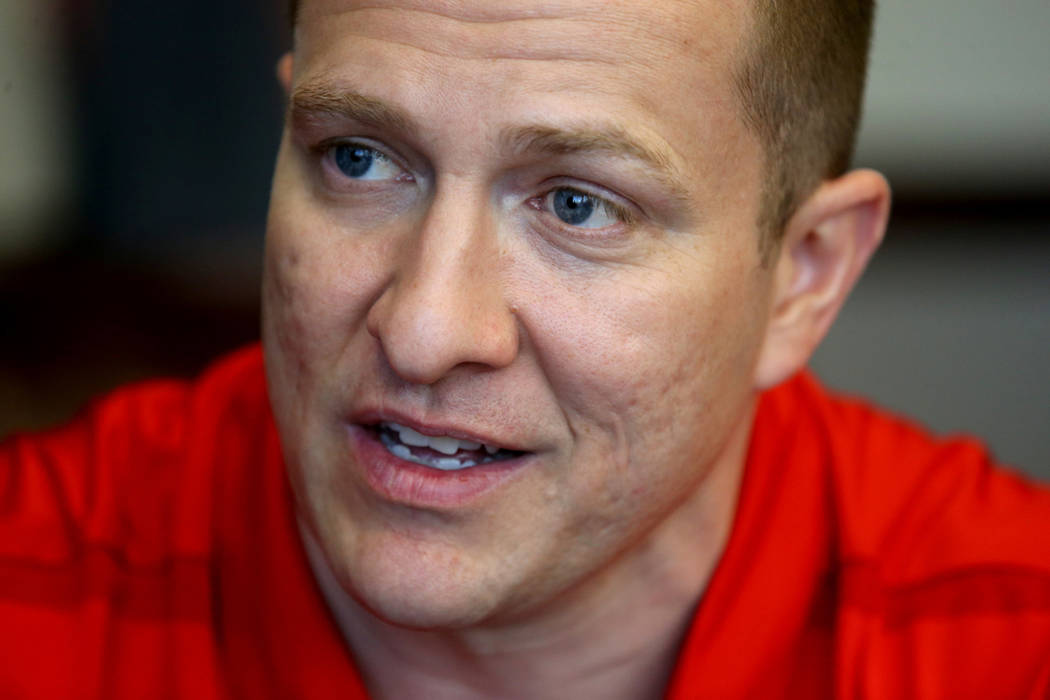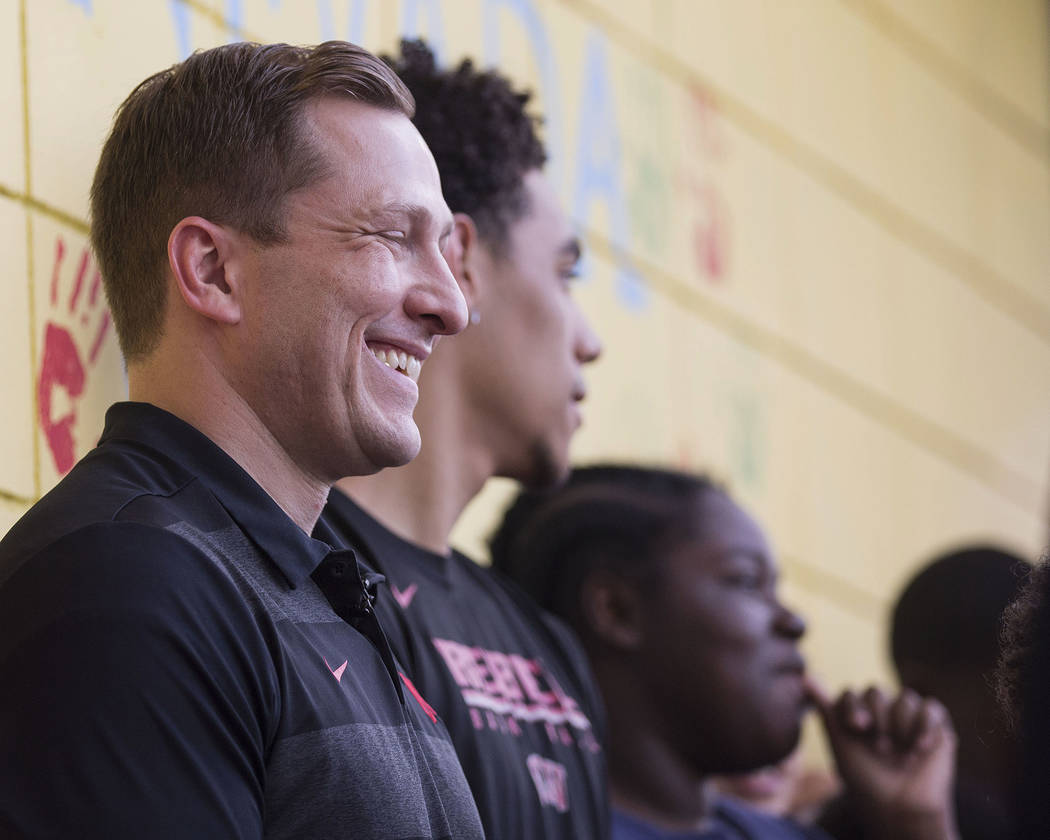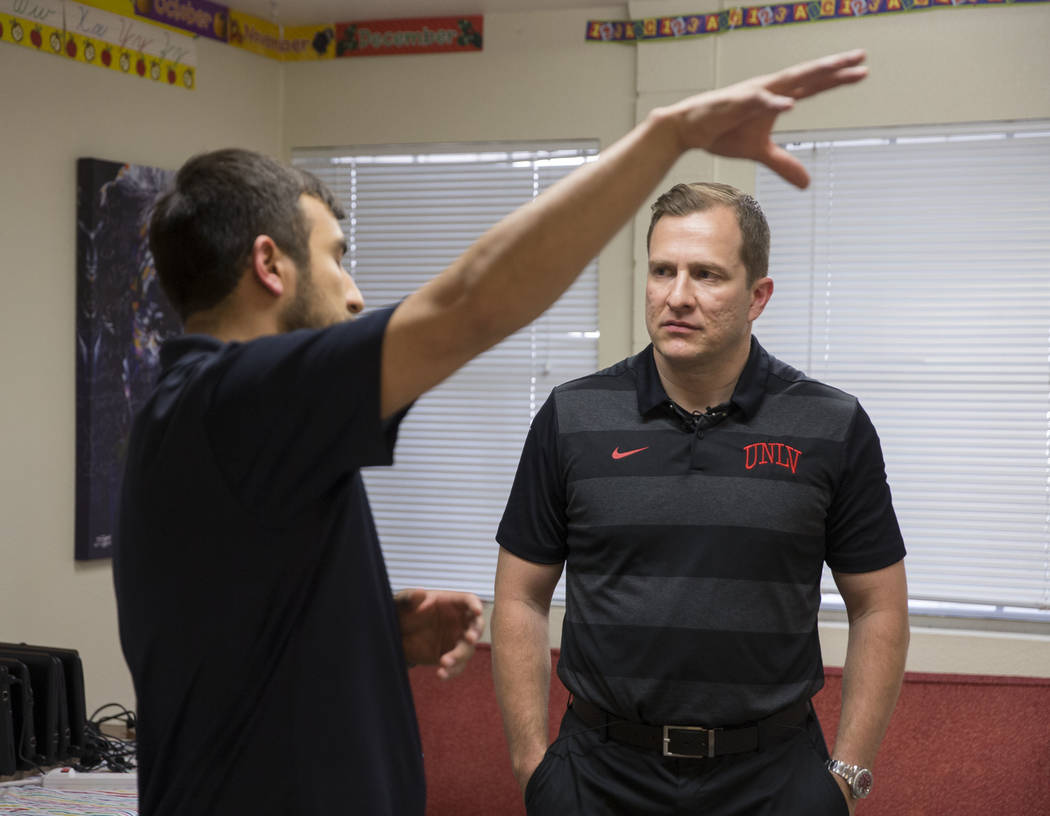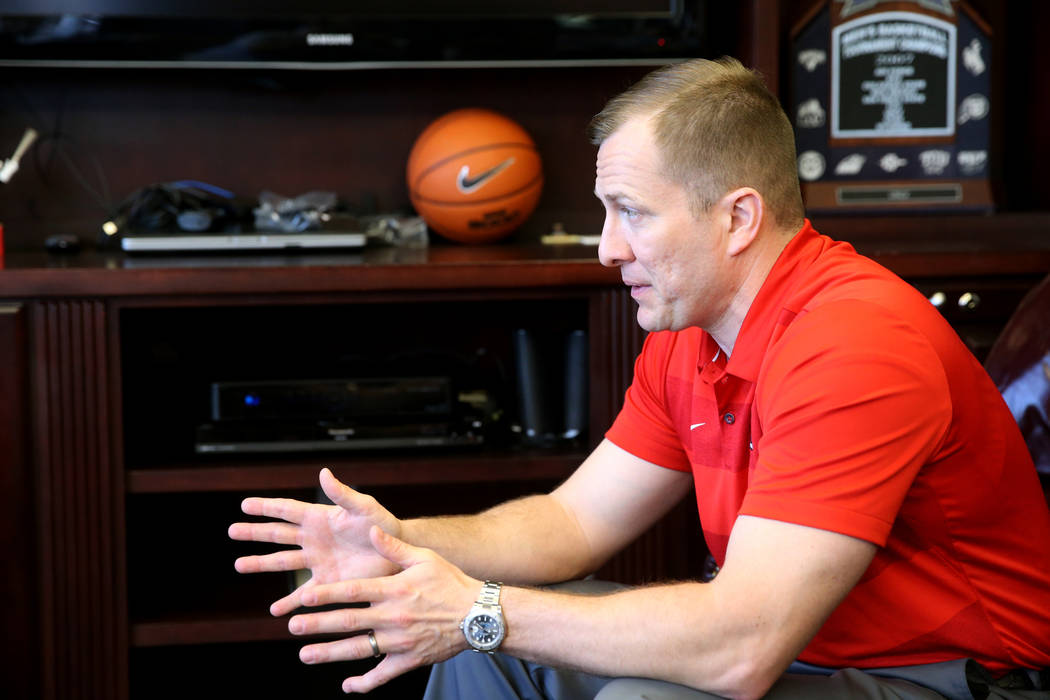T.J. Otzelberger says longer 3-point line benefits UNLV
New UNLV basketball coach T.J. Otzelberger recruits players to a system that emphasizes spreading the floor and making 3-point shots.
He said the NCAA’s decision Wednesday to move the 3-point line back to the international distance plays right into his hands.
“We’re recruiting guys that can shoot it with tremendous range, not guys that are toeing the 3-point line,” Otzelberger said. “I think it will make even more true numbers for the guys who can really shoot it. I think it will play to our benefit and open the floor up more and create even more spacing, open up the paint, which I think is a benefit to how we’ll play offensively.”
College basketball’s 3-point arc will be 22 feet, 1¾ inches from the basket beginning in the 2019-20 season. It had been 20 feet, 9 inches since the 2008-09 season.
With more players getting comfortable from that range, the NCAA Men’s Basketball Rules Committee approved the proposal May 10 to switch to the longer distance. The NCAA’s Playing Rules Oversight Panel made the change official Wednesday.
Like his coach, guard David Jenkins Jr. said the longer distance should benefit the Rebels. Jenkins played for Otzelberger the past two years at South Dakota State, and last season he made 45.3 percent of his 3-pointers.
“I feel like it gives me an advantage because sometimes the defense doesn’t respect people because they don’t think they can shoot it that far,” Jenkins said. “And, ultimately, I feel like I shoot a little better from range anyway. So I feel it’s an advantage not just for me but a lot of the really good shooters around the country.”
Division I teams attempted a record 22.5 3-pointers per game last season, the fourth consecutive year that the mark was broken. It also was the fourth straight year that teams averaged more than 20 attempted 3s per game.
The shooting percentages have held steady in the 34 or 35 percent range. It was 34.5 percent last season.
By pushing back the 3-point line, there could be more midrange shots attempted and centers might become more relevant again.
“The fact that the line is pushed back a little bit gives our post players a little more space to operate with,” Jenkins said. “Threes come best when it’s inside-out anyway, so we can probably play off the posts a little more.”
Former UNLV and current Oklahoma coach Lon Kruger said he supported the new rule.
“The 3-pointer has become such a big part of the game, which is fine, but we’ve lost a little balance,” he said. “So I think extending it a little bit, there’s nothing wrong with that at all.”
Otzelberger said creating a longer shot wasn’t the only change that should be made.
“I think that it’s more consistent with the game internationally,” he said of the new 3-point line. “The 3-point shot has been a big part of the game, and I think it will still continue to be that for the guys that can really shoot it. I think it’s a good change. I think (it’s positive) the more that we can unify the game with quarters and the international line and all of those things so it’s the same game that our guys are playing not only in college but beyond.”
More Rebels: Follow at reviewjournal.com/Rebels and @RJ_Sports on Twitter.
Contact Mark Anderson at manderson@reviewjournal.com. Follow @markanderson65 on Twitter.
Hitting from deep
3-pointers in Division I college basketball:
Season Avg. attempts Pct. made
2014-15 18.6 34.5
2015-16 20.5 34.7
2016-17 21.1 35.2
2017-18 21.9 35.2
2018-19 22.5 34.5





















